
Do you have a question about the Honda Civic Si 2005 and is the answer not in the manual?
| Brand | Honda |
|---|---|
| Model | Civic Si 2005 |
| Category | Automobile |
| Language | English |
Explains the manual's role in operating controls, understanding features, and referring to it later.
Identifies major interior components and controls shown in diagrams.
Highlights critical safety recommendations for safe vehicle operation.
Details the vehicle's safety features like the safety cage, crush zones, and seat belts.
Explains why seat belts are essential, how they protect occupants, and proper wearing techniques.
Describes the Supplemental Restraint System (SRS) airbags and their potential hazards.
Emphasizes that all children must be restrained, with specific rules for infants and small children.
Highlights back seat safety for children and risks of front airbag deployment.
Provides guidance on using rear-facing child seats for infants, including placement.
Details the use of forward-facing child seats for children over one year old.
Provides a diagram showing the location of various controls within the vehicle's interior.
Explains the meaning of various indicators on the instrument panel.
Details indicator lights for parking brake, turn signals, high beams, and hatch status.
Explains indicator lights for fuel, washer fluid, cruise control, and ABS.
Explains the engine coolant temperature gauge and its readings.
Provides instructions for operating windshield and rear window wipers/washers.
Explains how to use turn signals, headlights, and switch between high and low beams.
Provides instructions on adjusting the steering wheel for optimal driving position and safety.
Describes the immobilizer system's function in preventing vehicle theft.
Details the ignition switch positions and their impact on vehicle operation.
Explains how to operate power and manual door locks, including the hatch.
Provides instructions for replacing the battery in the remote transmitter.
Details how to adjust front seats for forward/backward movement and seat-back angle.
Explains head restraint adjustment and rear seat access methods.
Describes how to fold the rear seat to expand cargo space.
Explains how to determine vehicle load limits and safety considerations.
Provides guidelines for securely storing items in the passenger compartment and cargo area.
Lists essential checks and adjustments to perform before driving the vehicle.
Details engine starting procedures, including cold weather and altitude considerations.
Explains proper gear shifting techniques and clutch pedal usage for smooth operation.
Provides recommended shift points for optimal fuel economy and emissions control.
Details correct parking procedures, including parking brake use and wheel positioning.
Explains the braking system design, including wear indicators and brake fluid checks.
Describes ABS operation, safety reminders, and indicator light meanings.
Highlights critical safety precautions to take before performing maintenance.
Explains how to choose between normal and severe maintenance schedules based on driving.
Provides pages to record completed maintenance, including dates and dealer stamps.
Identifies the locations of essential fluid reservoirs under the hood.
Explains how to add engine oil, recommended types, and viscosity.
Details the process of changing the engine oil and filter.
Provides instructions for adding engine coolant and warnings about hot coolant.
Explains how to check and maintain brake fluid and clutch fluid levels.
Provides a step-by-step guide for replacing headlight bulbs.
Details the procedure for replacing front turn signal bulbs.
Explains how to replace side marker light bulbs.
Provides recommended cold tire pressures for various driving conditions.
Covers tire inspection for damage, wear, and the importance of wheel alignment.
Explains tire rotation procedures and guidelines for tire replacement.
Explains the proper use of the compact spare tire, including speed limits.
Provides comprehensive, step-by-step instructions for safely changing a flat tire.
Diagnoses engine starting problems related to the starter motor's operation.
Troubleshoots engine start failures when the starter motor sounds normal.
Explains how to identify engine overheating causes and the immediate actions to take.
Identifies the locations of interior and under-hood fuse boxes.
Details how to identify blown fuses and replace them correctly.
Explains towing methods and safety precautions for vehicle recovery.
Locates and explains vehicle identification numbers (VIN), engine, and transmission numbers.
Provides key vehicle specs: dimensions, weights, engine type, and bore/stroke.
Lists specifications for AC, lights, battery, tires, and fuses.
Summarizes emissions control systems and their compliance with the Clean Air Act.
Describes exhaust emissions systems: PGM-FI, ignition timing, and catalytic converter.
Explains the catalytic converter's function and guidelines for its protection.
Explains how to condition the vehicle to set readiness codes for emissions testing.
Provides contact details for customer service and dealership assistance.
Outlines warranty coverages for the new vehicle, emissions systems, and parts.
Explains how to report vehicle safety defects to NHTSA and Honda.
Provides information on purchasing factory-authorized manuals for the vehicle.
Alphabetical index entries from A through C for quick topic lookup.
Alphabetical index entries from D through I for quick topic lookup.
Alphabetical index entries from J through O for quick topic lookup.
Alphabetical index entries from P through S for quick topic lookup.
Summarizes gasoline requirements, engine oil, and transmission fluid capacities.
Lists recommended cold tire pressures for front, rear, and spare tires.

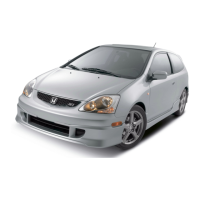

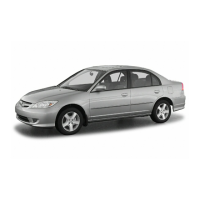


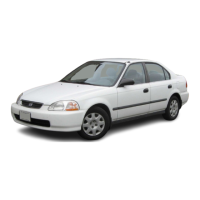


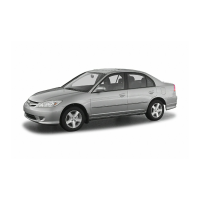
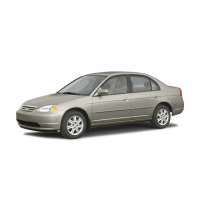

